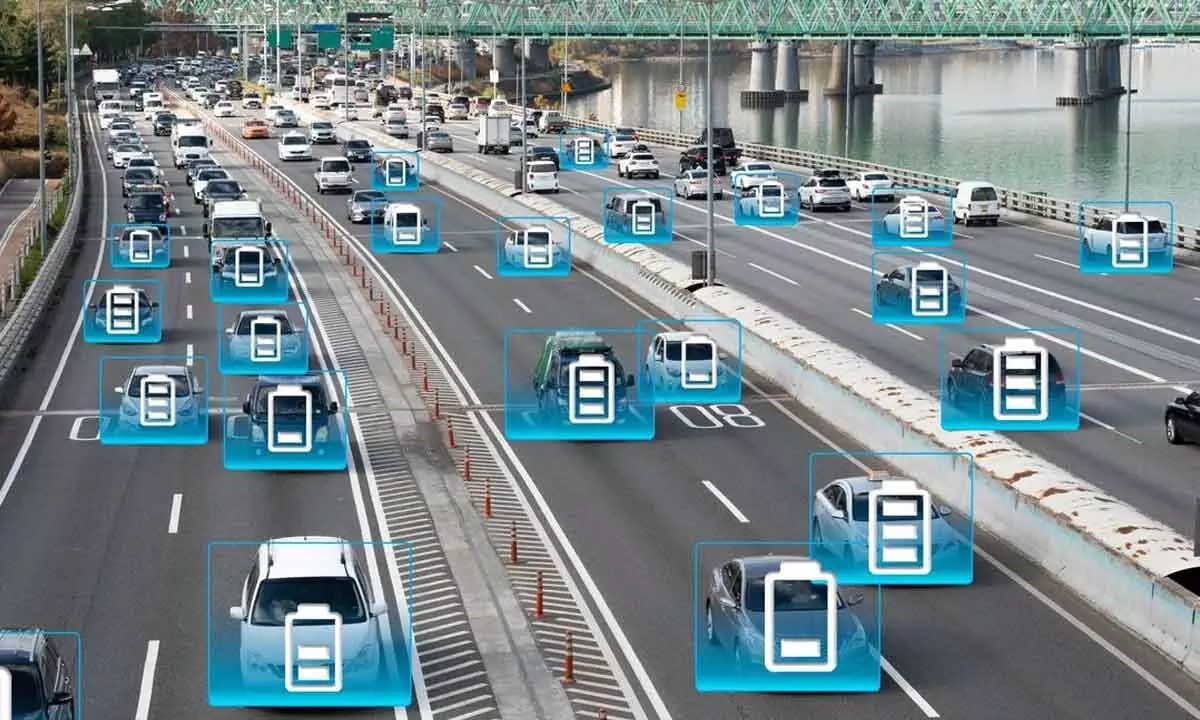Batteries, SAF or green hydrogen, what will power the future of mobility?
For the aviation industry, green hydrogen is expected to play a key role in fuelling future aircraft. With fierce global competition to perfect the tech, battery revolution has really only just begun
image for illustrative purpose

Batteries as we know them were invented in 1800s. The first electric cars were actually developed in the 1880s, but fell by the wayside as the internal combustion engine took over. Now, with the push to drastically de-carbonise the world, the battery is back in fashion. Transport accounts for about a quarter of global carbon emissions. Provided the electricity is from low-carbon sources, such as wind and solar, the switch to electric vehicles powered by lithium-ion batteries will stop billions of tonnes of carbon dioxide reaching the atmosphere.
Today, there are about 10 million electric cars on the world's roads. By the end of the decade, there will be at least 145 million. We're going to need a lot of batteries. Manufacturers all over the world are building giant battery-making plants for all the electric vehicles they're producing. And it's not just cars these gigafactories can help power.
Lithium-ion batteries already power the International Space Station, charged by the Sun rays. A village in Bihar, India, gained electricity for the first time in 2014 thanks to this technology. Villages used to burn wood, kerosene and diesel, but thanks to lithium-ion batteries connected to solar panels, they now enjoy what they call clean and cheap energy independence.
At the recent Auto Expo in Delhi, Maruti surprised everyone when it announced that it wouldn't bring out an electric car because it believes high costs deter buyers. In contrast, Tata Motors is bullish about electric vehicles (EV) and has a line-up of offerings. It has announced an EV version of the Tigor car for an ex showroom price of Rs 9.44 lakh, adding to electric versions of Nexon, concept SUV Sierra and Altroz.
According to Maruti, a small electric car would have to be priced at Rs 7 lakh-8 lakh for volumes and viability. A small petrol car costs around Rs 5 lakh, but customers may choose an electric one priced higher because maintaining it would be cheaper.
However, current battery technology doesn't allow that price point. A lithium ion battery forms 50 per cent of the cost of an electric car, making Maruti calculate that such a vehicle would have to be priced at more than Rs10 lakh. With only 20 per cent of the sales of cars in India at over the Rs7-8 lakh mark, the company sees little possibility in volumes for a small electric car. Why would a customer pay the price of a premium car and get a small one, Maruti calculates.
In the aviation industry, Boeing declared that all their aircraft (including existing ones) would be capable of burning 100 per cent sustainable fuels by 2030. At the same time as committing to sustainable aviation fuel (SAF), they distanced themselves from Airbus, eliminating the possibility of using hydrogen.
For Airbus SAF is very important as a complement to hydrogen. But hydrogen is one part of the solution, SAF is the other. Hydrogen is the solution for regional and intra-continental traffic as it has better operating economics. For long-range aircraft, the volume demands of hydrogen make SAF the only carbon-free alternative.
According to Airbus, investment in green hydrogen is enjoying unprecedented momentum as more and more governments cite this zero-emission energy carrier as an essential component of their net-zero climate strategies. For the aviation industry, green hydrogen is expected to play a key role in fuelling future aircraft. However, a green hydrogen ecosystem will need to take shape to ensure its availability to fuel aviation's future needs.
Currently, green hydrogen accounts for less than 1 per cent of the total hydrogen produced. However, this is expected to change. The cost of renewable energies is falling at an unprecedented rate. And investment in electrolysers – the 'clean' technology used to separate hydrogen and oxygen atoms in water – is booming worldwide. As a result, green hydrogen production capacity could achieve a 50-fold increase in the next six years, according to some estimates. This means green hydrogen could be on track to supply up to 25 per cent of the world's energy needs by 2050.
Reliance on cobalt is falling, as alternatives become available. And although not yet widespread, recycling could grow. Spurred on by e-waste regulation, a recycling plant in Singapore can turn 280,000 batteries a day into 99 per cent pure fine powders of copper, nickel, lithium and cobalt with a 90 per cent recovery rate. Just over the horizon, faster-charging solid-state lithium batteries promise to be even more energy-dense, with thousands of charge cycles. We're not quite there yet, but with fierce global competition to perfect the technology, the multi-billion dollar planet-saving battery revolution has really only just begun.

